Facing pervasive anti-Semitism, especially in Minneapolis, Jewish lawyers formed their own law firms
By ALLEN I. SAEKS
As the American Jewish World celebrates its 100th anniversary, we can look back at one of the more serious challenges to democracy in the history of Minnesota. That challenge was the anti-Semitism that existed during the period from the early-1930s to the early-’60s.
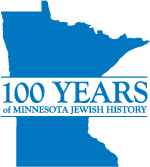
In Germany, as Adolph Hitler came into power in 1933, he issued a decree that no Jewish lawyers could appear as counsel in the Prussian courts. Then, five years later, in 1938, a second Hitler decree disbarred all Jewish lawyers. Thus began the destruction of the Rule of Law in Germany.
Also, in the early-’30s, a virulent anti-Semitism existed in the United States and particularly in Minnesota. This anti-Semitism was engendered by such people as Henry Ford, who published articles in the Dearborn Independent newspaper that generated the hatred of Jews as Communists, and blamed Jews for the difficult economic times of the Great Depression.
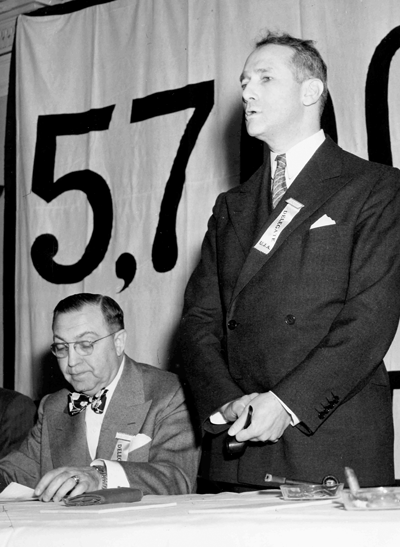
In Minnesota, and elsewhere, speakers such as Gerald L.K. Smith, Father Charles Coughlin, William Riley and Luke Rader openly preached a hatred of Jews. Speeches and other activities of the U.S. aviation hero Charles Lindbergh, who was a friend of Adolph Hitler, had met with Hitler on two or three occasions, generated anti-Semitism in the United States as well as in Germany. Most notable in Minnesota were actions of the militant Nazi Silver Shirts.
Significantly, Carey McWilliams, a nationally known journalist, designated Minneapolis as “the capital of anti-Semitism in the United States.”
In the middle of the previous century, anti-Semitism had become the established policy in Minneapolis, and to a lesser extent in St. Paul. Thus, no Jews would be admitted to the Minneapolis Athletic Club, the Minneapolis Club or other social organizations, including the Rotary, the Kiwanis, the Eagles and the Toastmasters. Signs indicating “Gentiles Only” and “No Jews Welcome” were commonly displayed by business organizations seeking new hires. These practices were followed by, for example, 3M and Dayton’s department store.
Most illustrative was that Jews were not permitted to belong to the AAA Club in Minneapolis, which provided travel information and road services to its members. Similarly, established law firms would not hire Jews. This overt discrimination existed not only with regard to the Jews, but also with respect to women, blacks and other minorities. This was particularly true with regard to the larger law firms in Minneapolis, such as the Dorsey firm and the Faegre & Benson firm.
As a result, it was necessary that Jews form their own law firms in order to practice law. Such Jewish law firms were the Maslon firm, Robins, Davis & Lyons (now known as Robins, Kaplan) and Leonard, Street and Deinard (now known as Stinson Leonard Street). These firms hired non-Jews and women, as well as Jews.
For example, Arthur L.H. Street and Irene Scott of Leonard, Street and Deinard were examples of non-Jewish lawyer hires by law firms that were perceived as being “Jewish law firms.” (Incidentally, Irene Scott became the first woman lawyer in Minnesota to be named a partner at an established law firm.)
In November 2013, as part of the events included within the Lawyers Without Rights Exhibit brought to Minnesota through the leadership of Chief Federal Judge Michael Davis, and through a committee chaired by U.S. District Court Judge Susan Richard Nelson, the Federal Bar Association presented a panel discussion at the Minneapolis Club. The panel featured prominent Jewish lawyers who had faced anti-Semitism in hiring at law firms in the 1950 and early-’60s. A huge, mainly non-Jewish, audience attended the panel discussion in the main dining room, with an overflow crowd watching on TV in an adjacent room.
An informal survey of lawyers who attended indicated that many were interested in the event because they were simply unaware of the non-hiring of Jewish lawyers some 50 years earlier.
Members of the panel, in addition to myself as the moderator, recited their experiences in seeking to be hired in established law firms in both Minneapolis and St. Paul. The panel members included Jerry Friedel, Jerry Simon, and Morris “Moe” Sherman. The panel members each had résumés establishing their prior success in law school or in clerkships with judges and the like. Yet, as Jews, they had difficulty even getting interviews with law firms, let alone being hired.
Also reported were the experiences of now Senior Judge Myron Bright of the Eighth Circuit Court of Appeals, who after graduating law school sought without success, in 1947, to be hired by a law firm in Duluth once the firm determined that Bright was Jewish. Jerry Simon reported on his efforts to be hired by St. Paul law firms, but he was unsuccessful in spite of an outstanding résumé. He eventually was hired by the Maun Hazel law firm in St. Paul, even though Joe Maun explained to Simon that it was difficult for a law firm to hire Jewish lawyers when clients are reluctant to engage law firms which in turn hired Jews.
Jerry Friedel also recited his difficulty in being hired by established law firms and as a result had to establish his own law firm. Morris Sherman, who graduated from Harvard Law School and later attended the London School of Economics, reported on his difficulties in obtaining hiring interviews as a Jewish lawyer.
In the 1940s, Minneapolis was known in both the business and general community as having leaders who were philanthropists contributing generously to their respective communities. Several of those leaders are now being appropriately recognized and honored by the Minneapolis Foundation as it too celebrates 100 years of its extraordinary contributions to the City of Minneapolis. Unfortunately, however, no such leader had been successful in ameliorating anti-Semitism. However, there appeared on the scene in 1945, a person who recognized the anti-Semitism that existed and conceded that he was embarrassed by Minneapolis being known as the capital of anti-Semitism. That individual was Hubert H. Humphrey, who was first elected mayor of Minneapolis in 1945.
Humphrey actively sought to rid Minneapolis of its reputation as the capital of anti-Semitism. His first step, in 1947, was to initiate and to obtain the passage of a Minneapolis city ordinance proscribing discrimination in hiring to be enforced by fines and potential jail sentences. In addition, he set up the first Fair Employment Practices Commission (FEPC) in the nation to hear cases of discriminatory hiring in Minneapolis and to take such steps as appropriate to discourage such practices. That was followed later in 1955, through the adoption by the Minnesota Legislature of a law prohibiting discriminatory hiring throughout the state.
After he created the Mayor’s Fair Employment Practices Commission, Humphrey appointed Amos S. Deinard to the commission. Deinard was a founding partner of the law firm of Leonard, Street and Deinard. Sightless since the age of seven, Deinard served on the Commission for 17 years, of which he was chair for 15 of those years. Deinard was the son of Rabbi Samuel N. Deinard, a most distinguished rabbi of Temple Israel for many years, and who, coincidentally, was one of the two founders of the American Jewish World.
As chair of the FEPC, Deinard set up numerous meetings with the CEOs of prominent corporations, and with leaders of community organizations, to persuade such persons that the preachings of the ministers of hate were not only unfair, but untrue, and that community and business leaders should follow the letter and spirit of the new Minneapolis ordinance. In addition to the work of Deinard, the country was beginning to be exposed to the work of Martin Luther King, Jr. in the area of human and civil rights, and others espousing the importance of following non-discriminatory hiring practices.
There followed, as a result of the work of Deinard, the FEPC, and others, a gradual reduction in the discrimination against hiring Jews, as well as against women and people of color. At the same time, Jews began to organize to combat the anti-Semitism that was present in hiring. One of the first was the Minnesota Jewish Council, which later evolved into the Jewish Community Relations Council of Minnesota and the Dakotas, initially led by Executive Director Morton Ryweck, and then currently by the capable and effective Stephen Hunegs.
As these changes began to occur, so likewise began changes in the prominent law firms that had historically refused to hire Jews. At the Dorsey law firm, Arthur Weisberg, a Jewish lawyer who had been initially hired as a law clerk, went on to become a prominent practicing lawyer in the firm. At Faegre (now Faegre Baker Daniels), a Jewish lawyer by the name of Mitch Goldstein, who had served several years in the Tax Division of the Justice Department, was actively sought out and hired to work on tax issues. Ironically, in recent years, Faegre has had a distinguished and prominent Jewish lawyer, Phil Garon, as its managing partner, and likewise, the Dorsey law firm currently has Ken Cutler, a prominent Jewish lawyer, as its managing partner. At the same time, the so-called Jewish law firms that had hired non-Jews during their existence, continued to attract both well-qualified Jewish and non-Jewish lawyers, thus enhancing the prominence and capabilities of those law firms.
As of the 100th anniversary of the American Jewish World, we can celebrate that the Rule of Law has been preserved in Minnesota, that at least three new law firms have been created, that long-established law firms have been enriched by the hiring of well-qualified Jewish lawyers, and that the path is now open for all law firms in Minnesota to hire women and minority lawyers so as to lay an even stronger foundation to preserve the fragile Rule of Law in Minnesota.
***
Allen I. Saeks is senior counsel at the law firm of Stinson Leonard Street LLP.
In the interest of full disclosure, he also is a partner in Minnesota Jewish Media, LLC, the parent company of the American Jewish World.
(American Jewish World, 7.31.15)










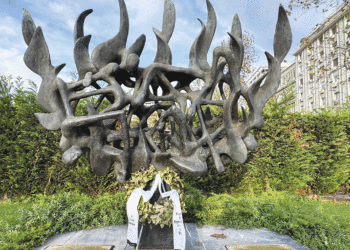
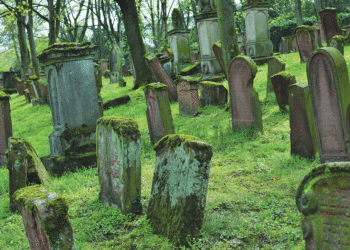
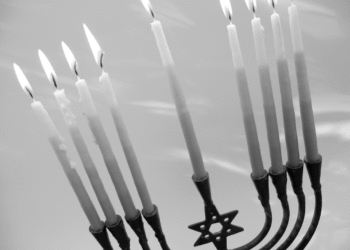
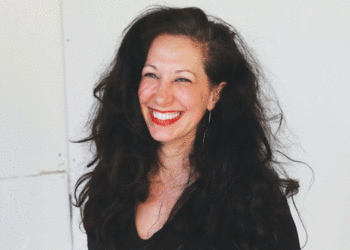
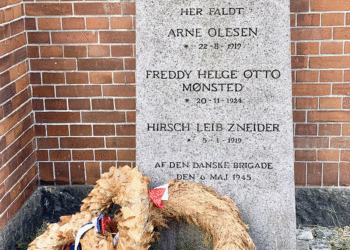





This is a little bit off the seriousness of the topic, but . . .
I had the privilege of knowing Amos Deinard, through my father, Leo. Amos was amazing. I remember, 50 years ago, giving him a ride home from some sort gathering at our home in St. Louis Park at 2837 Glenhurst Ave, going by Main Beach at Cedar Lake to Lake of the Isles Blvd. (and as I think I recall, Mt. Curve Ave.). Amos literally gave me directions to the foot, based on his knowledge of the road surface, timing, and turns. Not only did he have “vision,” but he “saw” better than I did as a young man with sight.
The people mentioned in this article were giants, many of whom I am proud to have known.